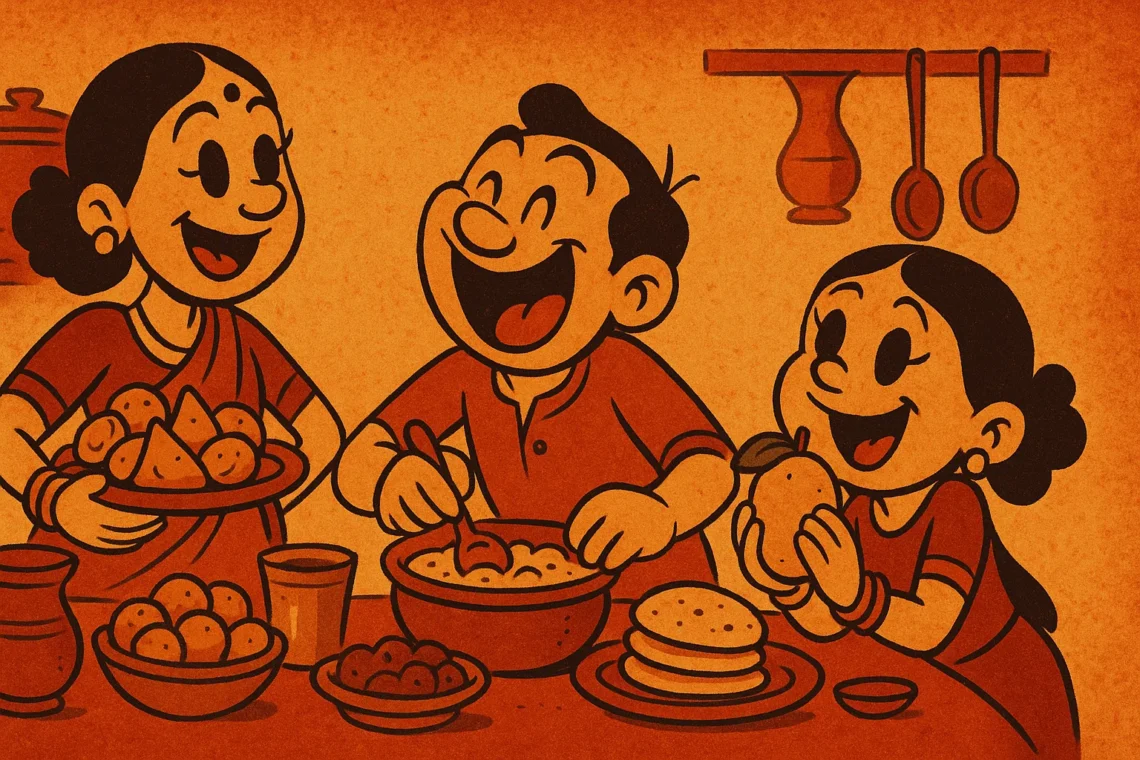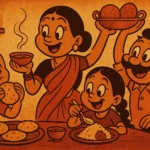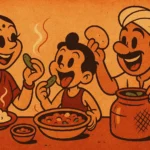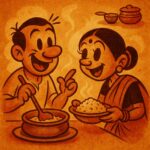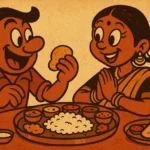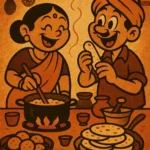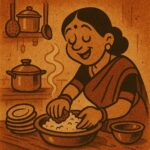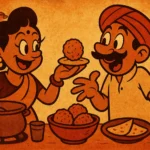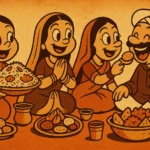Let’s face it: we’ve all been there. You’re sitting at the kitchen table, staring into an open jar of pickle, wondering how you got here. The flavors are bold, tangy, and maybe just a little bit salty—kind of like the mood you’re in. You know, the kind of mood that feels a bit like a rollercoaster. Sad? Yes. Proud? Definitely. There’s something oddly comforting about this mix of emotions, something uniquely human about the way food can act as both a reflection and a solace during the emotional highs and lows of life. And when those two emotions—sadness and pride—collide in the kitchen, the results can be nothing short of delicious.
For me, this emotional eating phenomenon isn’t just about indulgence. It’s about embracing food as a source of comfort, and yes, sometimes, even a way to reclaim power when everything else feels a little out of control. It’s about eating for the soul, not just the stomach. Indian food, with its layers of spices, textures, and aromas, has this magical way of doing exactly that. You can be sad and proud at the same time while enjoying the richness of a bowl of dal or the crunch of a samosa. Because why not? Emotional eating doesn’t need to be a dirty phrase—it’s about finding strength in the most comforting, flavorful ways possible.
Emotional Eating: Reclaiming the Narrative
Let’s talk about emotional eating for a minute. The term often comes with a bit of shame, right? If you’ve ever had a stressful day and found yourself diving into a bag of chips or devouring a box of chocolate, you’ve probably heard that internal voice telling you, “You shouldn’t be eating this. This is a coping mechanism.” Well, guess what? It’s not all bad. Emotional eating doesn’t need to be about guilt or giving in to every craving; sometimes, it’s about accepting the feelings and giving yourself permission to indulge without judgment.
Food is a direct line to our emotions. If we’re feeling down, we often turn to food for comfort, and there’s nothing wrong with that. In fact, in many cultures, including Indian, food has been a source of emotional expression for generations. Think about it—how many times have you had a bowl of comforting khichdi when you weren’t feeling well? Or perhaps it was a warm, sweet cup of masala chai that lifted your spirits during a stressful afternoon. These foods, in their simplest form, are the backbone of emotional self-care. They don’t judge you. They don’t demand perfection. They just are, and they give you exactly what you need—comfort, warmth, and a sense of pride.
The Comfort of Indian Food: Pride in Every Bite
When it comes to comfort, Indian food knows exactly how to hit the spot. There’s something about the flavors of Indian cuisine that feels like a warm embrace. Take a simple bowl of dal, for instance. It’s nothing fancy—just lentils, turmeric, cumin, a touch of ghee—but it’s deeply nourishing, both physically and emotionally. I can’t tell you how many times I’ve turned to dal when I’ve felt low. It’s humble, comforting, and always there when I need it. And it doesn’t ask for anything in return—except maybe some rice or roti on the side. There’s pride in that simplicity, in knowing that something so basic can bring so much joy.
Then there’s the pride that comes with a well-made biryani—layers of fragrant rice, tender meat, and the perfect blend of spices. No matter what mood I’m in, biryani never disappoints. It’s the dish that makes me feel like I’m part of something bigger—like I’m continuing a legacy of flavor and culture that stretches across generations. And yes, it’s also the dish I turn to when I want to feel proud of myself. Even when I’m feeling low, cooking biryani reminds me of my roots and the strength that comes from the food I’ve grown up with.
Sadness in the Kitchen: The Healing Power of Comfort Foods
Sadness and food often go hand in hand. When the world feels heavy, food can be the one thing that doesn’t demand anything from you. It just offers comfort, like a warm hug in a bowl. And no dish speaks to this more than the humble khichdi. If dal is the reliable friend you turn to in times of need, khichdi is the soft pillow you collapse into after a long, exhausting day. It’s light, it’s soothing, and it knows exactly how to make you feel better without saying a word.
Khichdi is the ultimate form of emotional eating. It’s the dish I make when I need a little bit of tenderness, a reminder that things will be okay. The simplicity of it—rice, lentils, a pinch of turmeric, and ghee—doesn’t seem like much, but when it’s cooked with love, it’s all you need. It’s the food equivalent of a gentle pat on the back. And the best part? It’s always there for you when you need it. It’s the kind of food that, even if no one else understands, you know it’s exactly what you need.
Guilt and Indulgence: The Sweet Side of Emotional Eating
But let’s not forget the indulgent side of emotional eating. Sometimes, the soul just needs a little sugar. And for me, that sugar comes in the form of chocolate. Dairy Milk. I’m talking about the classic, the one that has seen me through many an emotional breakdown. There’s something about the smooth, creamy texture and that perfect sweetness that makes the world feel just a little bit better. And yes, there’s a little guilt. Maybe I shouldn’t be eating an entire bar of chocolate in one sitting, but the thing is, I don’t care. Because in those moments, the chocolate is my friend, my comfort, my moment of indulgence that doesn’t ask me for anything but to enjoy it.
Food guilt is a strange thing. We’re often taught that we should feel bad for indulging in something we love, but I say, why? Eating something indulgent doesn’t have to be tied to shame. It can simply be a way to enjoy life, to savor the little moments, and to give yourself a break when you need it. Whether it’s a piece of chocolate, a serving of ice cream, or even a bowl of biryani at 2 a.m., sometimes food is more than just about nourishing the body. It’s about nourishing the soul.
Embrace the Complexities of Food and Emotion
So, how do we eat like we’re sad and proud at the same time? It’s simple: embrace both emotions. Sometimes, you need the comfort of khichdi to soothe your soul, and other times, you need the joy of chocolate to make you feel better. Both are valid. Both are necessary. And both are part of the beautifully complex relationship we have with food. Emotional eating isn’t something to be ashamed of. It’s about finding balance, about acknowledging that sometimes, food is more than just sustenance—it’s therapy, comfort, and joy wrapped in a meal.
The next time you feel a little sad or a little proud, don’t shy away from the food that will bring you comfort. Whether it’s dal, chocolate, or anything in between, embrace it with love, and let it remind you that food, in all its forms, is always there for us.
Born in Mumbai, now stir-frying feelings in Texas. Writes about food, memory, and the messy magic in between — mostly to stay hungry, sometimes just to stay sane.

